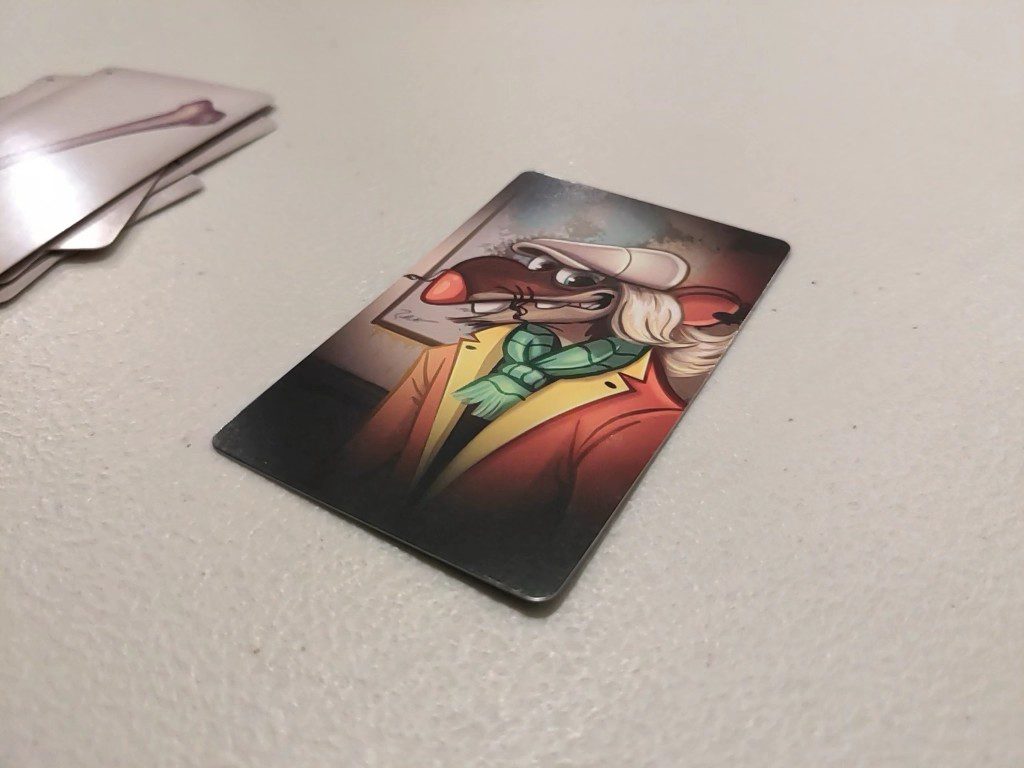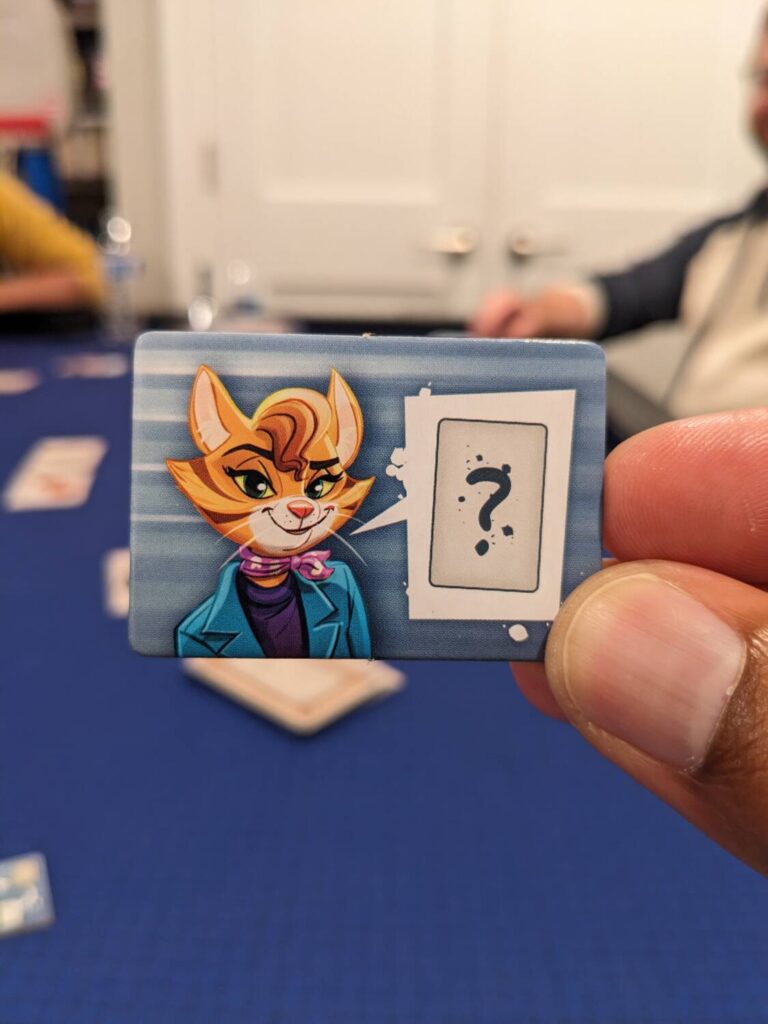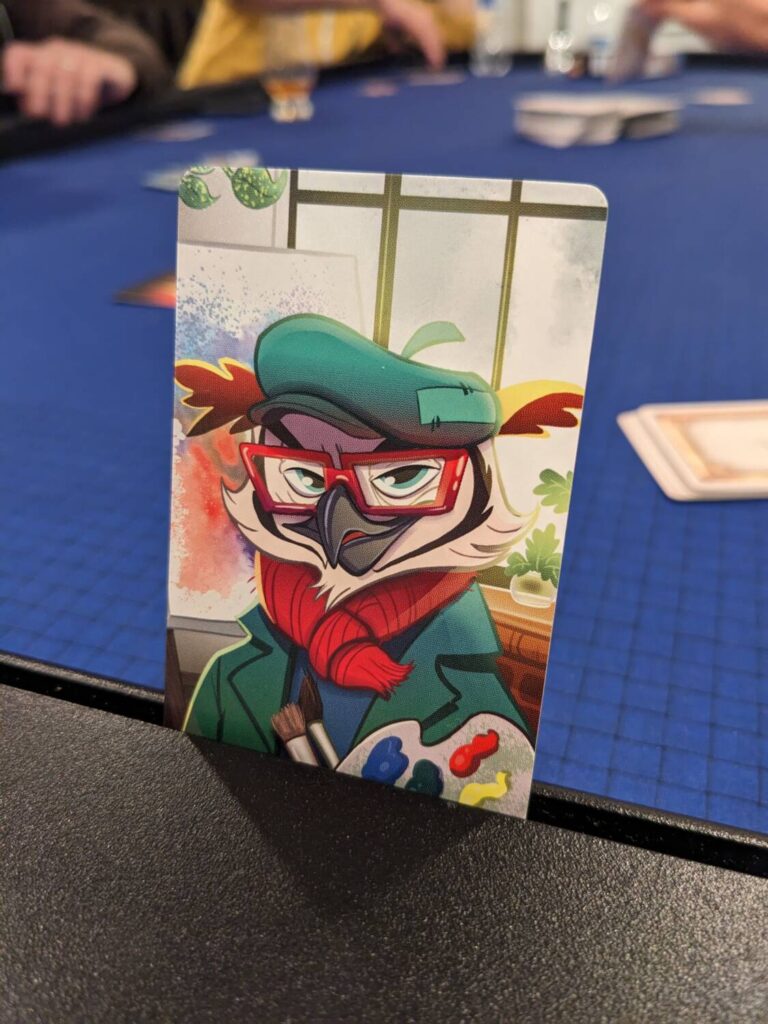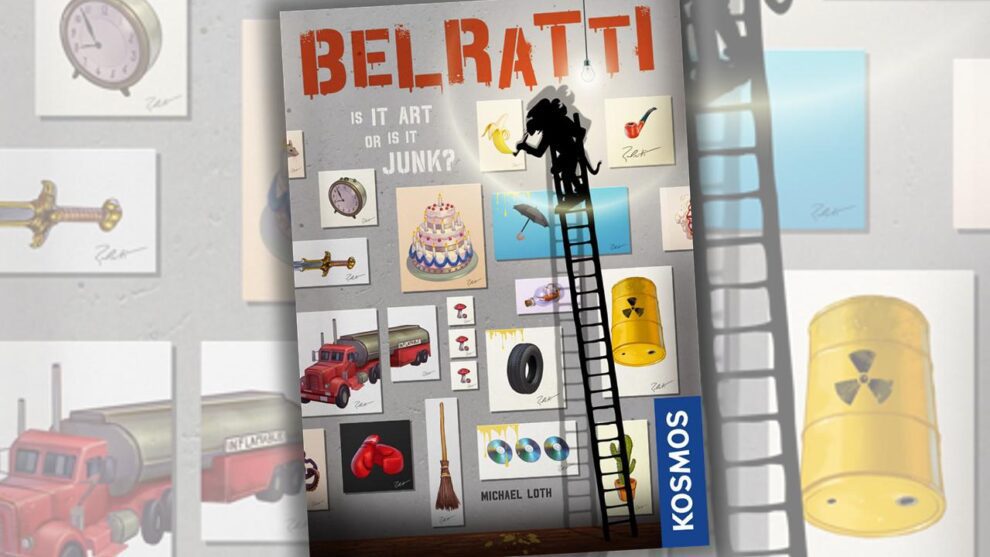Disclosure: Meeple Mountain received a free copy of this product in exchange for an honest, unbiased review. This review is not intended to be an endorsement.
“It sounded like you guys were having a LOT of fun last night,” my wife began. “What game were you playing when you were laughing so hard?”
Funny you should ask.
Belratti (2024, KOSMOS) is a reprint of a 2018 game designed by Michael Loth, where players work together to score as many points as possible before a dastardly forgery artist known as Belratti gets enough of their paintings into the local museum. Playing as either Painter Owl (representing a pool of legitimate painters) or as Dr. Cat, a team meant to simulate the efforts of the museum director, players will submit works of art (cards) that align with one of the two theme cards being used for a given round. When added to four random cards drawn from a massive deck of nearly 200 cards, the curators have to figure out which pictures are “real” (submitted by players) or fakes (the randomly drawn cards).
In essence, that is the entire game. Play ends when Belratti is able to sneak six fakes into the museum, then players use a tiered high-score chart to figure out how well they did.
Here’s why I know Belratti works—we finished our first game in about 20 minutes and got absolutely demolished, scoring eight points and finishing in the lowest scoring tier. As soon as it was over, three of our six players asked to play Belratti again right away. Belratti ended up being the runaway hit of the night, and the game created its own running narrative thanks to the miscommunication between artists and museum directors.
Loud laughter means the game is going well. My wife knows it, and you do too.

What Do You See?
The magic of Belratti comes in the form of artistic interpretation.
Each round, two cards are laid on the table by the museum director team showing various objects. (Like other players in my review group, I wished the art was a greater mix of images, not just clip art-adjacent pictures of, say, roller skates, a toaster, or a revolver.) The directors then ask artists to collectively pick a number of cards (3-7) to submit towards one of the two theme cards.
Artists review their individual hands—the hand is smaller with a larger player count, which I think makes everything much more interesting—then hint at their findings to their peers on the artist team. “I have one for sure, maybe a second,” one artist might say. “You can count on me for zero…definitely zero,” another might respond.
So, the artists cobble together pictures that they think are close on theme without telling anyone specifically what they have in their hand. In one of our rounds, a children’s slide was pictured, so I threw in a picture of an ice cream cone, because as everyone knows, kids love sweets. (Artists submit their cards face-down to the center of the table.) Then, the directors draw four cards on behalf of Belratti, also face-down, and shuffle the artist and Belratti submissions together.
Then, the fun begins.

Directors have a discussion while the artists quietly sit and watch the proceedings, trying their best not to blow their poker face by revealing any truths. Directors have to sort out which pictures should go with each theme, as well as hope that those pictures were the ones submitted by the real artists. After a few minutes, the directors select a number of cards equal to their original request against the theme cards, then the artists reveal which ones are theirs, which theme it should have been tied to, and which remaining cards are Belratti’s.
Oh my goodness! Watching artists explain their logic then sharing their excitement or disappointment that their selected cards were not obvious to the directors is such a blast. It was during the second or third round of our second game when I realized that I would never play Belratti with a small player count.
That’s because in a three-player game, one player is the artist and has TWELVE CARDS to pick from to fit the themes. In a six-player game, three players are artists and each artist gets six cards. It is significantly more manageable. The directors have only two players to decide on the paintings in a three-player game…but, the team of directors is three-deep in a six-player game. More yelling is a good thing.
The players have mitigation tactics, in the form of joker tiles. These five tiles give the artists and the directors a chance at a mulligan here and there—a new hand of cards for the artists, for example, or maybe the chance to tap one submitted painting to see if that was submitted by the players or by Belratti. Jokers are powerful, but very difficult to put back into play, so being cautious about when to play jokers is vital. There’s even a mini-expansion in the box that changes up the rules just a tad for experienced players.

Luck, and Low Player Counts
I played Belratti three times for this review—once at four players, and twice at six. Now that I’ve seen it at a lower player count, I’m never going back…which is a warning for players considering a purchase.
At six or seven players, Belratti is a winner. There are rounds where you are going to get hosed by a random card draw—in one of my games, Belratti randomly had two weapon images drawn when one of the themes was a weapon, scoring Belratti a very uncool and somewhat game-breaking two points—and that will also turn off a competitive player looking to enjoy the end result instead of the journey.
If you can get past some of these luck-driven elements, Belratti is a fun time at the table. I’ve never scored better than the lowest scoring tier—even now, three plays in!—and I don’t care, because Belratti delivers on the laughs in a big way.











